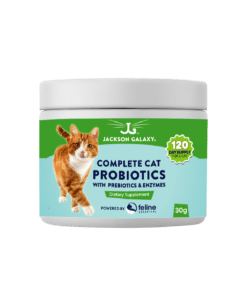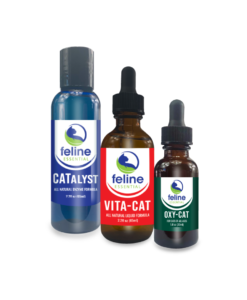According to PetFoodIndustry.com, more than 90% of indoor cats are fed a dry food diet. But if that’s the case, why do so many feline health experts advocate for a moisture rich diet instead?
Let’s dive into why the difference between dry and wet food matters – and how it could impact your cat’s health and longevity.
The Popularity of Dry Food
Dry cat food is cheap, convenient, and easy to serve. Just scoop it into a bowl and go.
Kibble also lasts a long time on the shelf and most cats seem to love it. Dry food is often packed with artificial flavorings and carbohydrates. In fact, those highly processed carbs can be addictive for cats, even though they offer little to no nutritional benefit.
But just because it’s popular doesn’t mean it’s healthy.
Why a Moisture Rich Diet Matters
Cats are obligate carnivores with unique biological needs. Unlike humans or dogs, they evolved as desert animals and have a very low thirst drive. In the wild, they would meet their hydration needs by consuming prey – food that naturally contains around 70-80% moisture.
Dry food, by contrast, contains only about 10% moisture.
Because cats don’t naturally drink much water, feeding only dry food can leave them in a constant state of mild dehydration, even if they appear to be drinking from their bowl. Over time, this lack of moisture can lead to serious health issues like:
-
Chronic kidney disease
-
Urinary tract blockages or crystals
-
Dehydration-related constipation
-
Diabetes mellitus
-
Feline lower urinary tract disease (FLUTD)
A moisture rich diet helps support kidney function, bladder health, and digestive regularity – and reduces the risk of preventable chronic illness.
Supporting Research
-
A 2008 study published in the Journal of Feline Medicine and Surgery found that cats fed canned food had significantly higher total water intake and urine volume, helping reduce the risk of urinary disease.
-
A 2014 review in Veterinary Clinics of North America: Small Animal Practice highlighted the link between chronic dehydration and kidney disease in cats – emphasizing the benefits of a moisture rich diet.
How to Improve Your Cat’s Diet
Even if you can’t switch entirely to raw or canned food, just adding some moisture-rich meals or toppers can make a big difference over time.
Here are some easy ways to start:
→ Add a spoonful of high-quality canned or raw food to your cat’s kibble
→ Mix in rehydrated freeze-dried raw food or toppers
→ Offer low-sodium bone broth or raw goat milk as a treat
→ Replace one dry meal per day with a moisture rich option
Even a 25% change toward a moisture rich diet can positively impact your cat’s health.
A Simple Comparison
Feeding kibble every day is like eating fast food for every meal. It’s convenient, inexpensive, and hits that dopamine button – but it lacks essential hydration and nutrients.
You wouldn’t eat burgers and fries three times a day… so why feed your cat something just as processed?
Your Cat Deserves Better
A moisture rich diet isn’t just a trend – it’s a vital shift toward better health, longevity, and quality of life for your feline companion. Whether you’re transitioning to raw, canned, or just starting with a spoonful a day, your cat will thank you.




Recent Comments